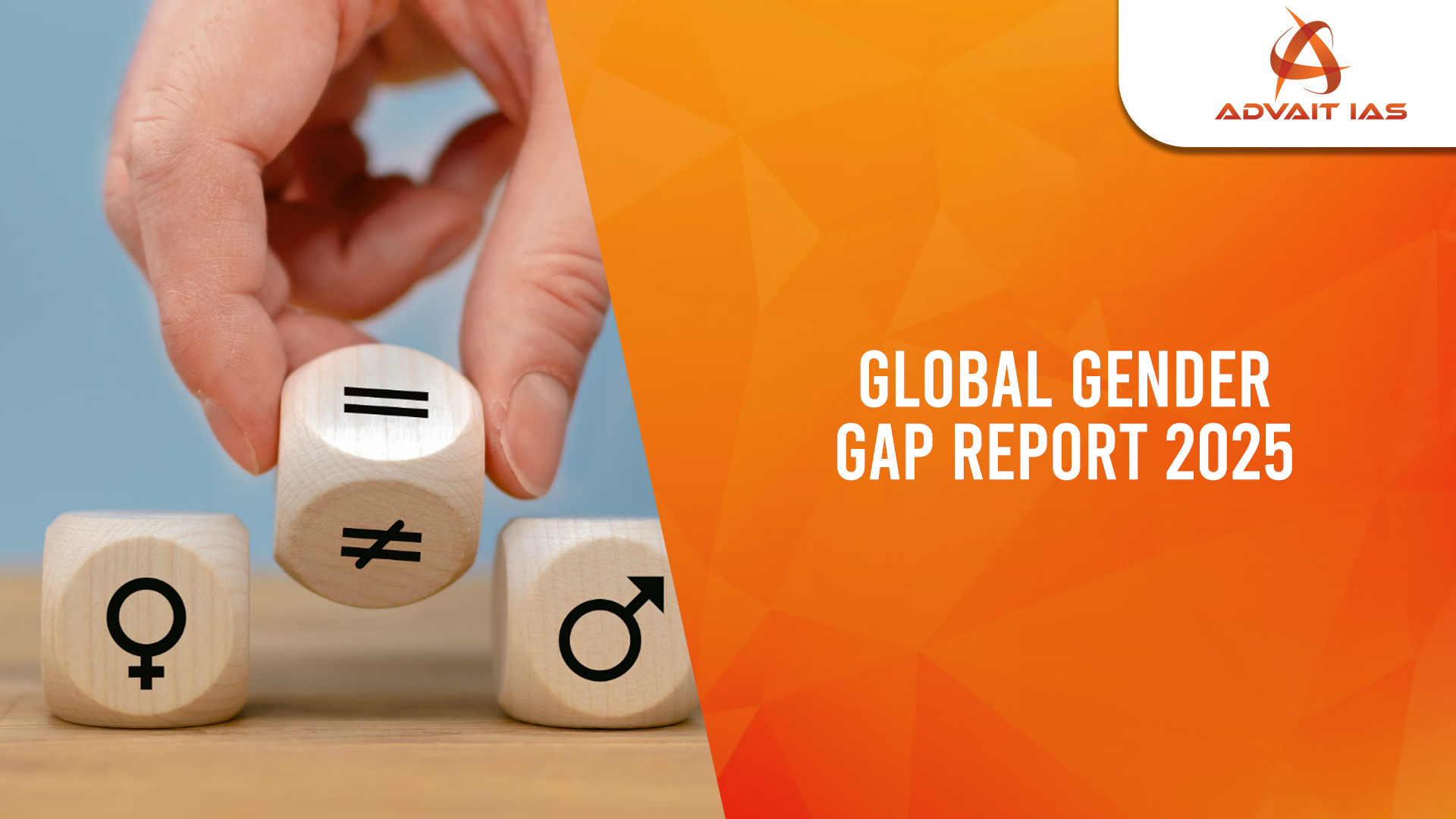India ranked 131st out of 148 countries in the Global Gender Gap Report 2025 released by the World Economic Forum (WEF).
- This marks a decline from the 129th rank in 2024, with India recording a gender parity score of 64.1%.
About the Global Gender Gap Index
- Published by: World Economic Forum (WEF) annually since 2006.
- Purpose: To benchmark gender parity progress globally and track disparities in:
- Economic Participation and Opportunity
- Educational Attainment
- Health and Survival
- Political Empowerment
- Scoring: Scale of 0 (inequality) to 1 (full parity).
- Acts as a diagnostic and policy tool for national governments and stakeholders.
Key Findings – Global Gender Gap Report 2025
India’s Performance
- Overall rank: 131 out of 148 (score: 64.1%)
- Economic Participation: Improved to 40.7% parity; slight rise in income parity (from 28.6% to 29.9%)
- Educational Attainment: High parity at 97.1%
- Health and Survival: Improved metrics in sex ratio and life expectancy
- Political Empowerment: Decline in women’s parliamentary representation (14.7% → 13.8%) and ministerial roles (6.5% → 5.6%)
South Asia Region
- India lags behind Bhutan (119), Nepal (125), Sri Lanka (130)
- Bangladesh surged to 24th globally, driven by women’s political empowerment
- Pakistan ranked lowest globally (148th)
Global Leaders
- Top 5 Countries: Iceland, Finland, Norway, UK, New Zealand
- Global Gender Gap Closed: 68.8%
- At current pace, full parity expected in 123 years
India’s Efforts in Bridging the Gender Gap
- Political Empowerment: Nari Shakti Vandan Adhiniyam (2023): 33% reservation for women in Parliament and State legislatures
- Education & Skill Development:
- Beti Bachao Beti Padhao, Vigyan Jyoti
- Female Gross Enrolment Ratio rose from 42.5% (2017-18) to 46.3% (2022-23)
- Economic Participation:
- Female labour force participation increased from 23.3% (2017-18) to 7% (2023-24)
- Supportive schemes: Stand-Up India, Mahila e-Haat
- Financial Inclusion:
- Over 28 crore women have Jan Dhan Yojana accounts
- Health & Reproductive Rights:
- PM Matru Vandana Yojana, National Health Mission
- Maternal Mortality Rate dropped to 97 (2018–20) from 174 (2013–15)
- Social Norms & Awareness:
- Media and grassroots movements challenging gender roles
Challenges Widening the Gender Gap in India
- Low Female Workforce Participation:
- Only 41.7% (PLFS 2023–24); majority in informal/agriculture sectors
- Barriers: patriarchy, unsafe workspaces, childcare gaps
- Educational Disparity:
- Female literacy: 65% vs male 82% (Census 2011)
- 40% girls (15–18 yrs) out of school; dropouts due to menstruation stigma
- Wage Gap and Unpaid Work:
- Women earn ~73% of male wages; do 289 mins/day of unpaid care (3x more than men)
- Unpaid care work valued at ₹22.7 lakh crore (~7.5% of GDP) — but invisible in economic data
- Corporate Representation:
- Women hold only 17% CEO roles and 20% board seats in India Inc.
- Implementation Gaps:
- Schemes suffer from low awareness, poor last-mile delivery, and lack of gender-sensitive monitoring
Key Government Initiatives to Promote Gender Equality
- Legislative Measures:
- 106th Constitutional Amendment Act, 2023: 33% reservation in legislatures (Lok Sabha, Assemblies)
- Flagship Schemes:
- Beti Bachao Beti Padhao
- Mahila Shakti Kendra
- Mahila Police Volunteers
- Rashtriya Mahila Kosh
- Economic Empowerment:
- Mahila e-Haat, Entrepreneurship and Skill Development Programme (ESSDP)
- Stand-Up India: Supports women-led startups and SC/ST entrepreneurs
- Local Governance:
- 33% reservation for women in Panchayati Raj Institutions
While India has made notable strides in education, health, and financial inclusion, significant gaps persist in economic empowerment, political representation, and workplace parity. Accelerating gender parity will require:
- Strengthening institutional mechanisms
- Tackling societal biases
- Recognizing and valuing unpaid care work
- Ensuring effective policy implementation with gender-sensitive monitoring






